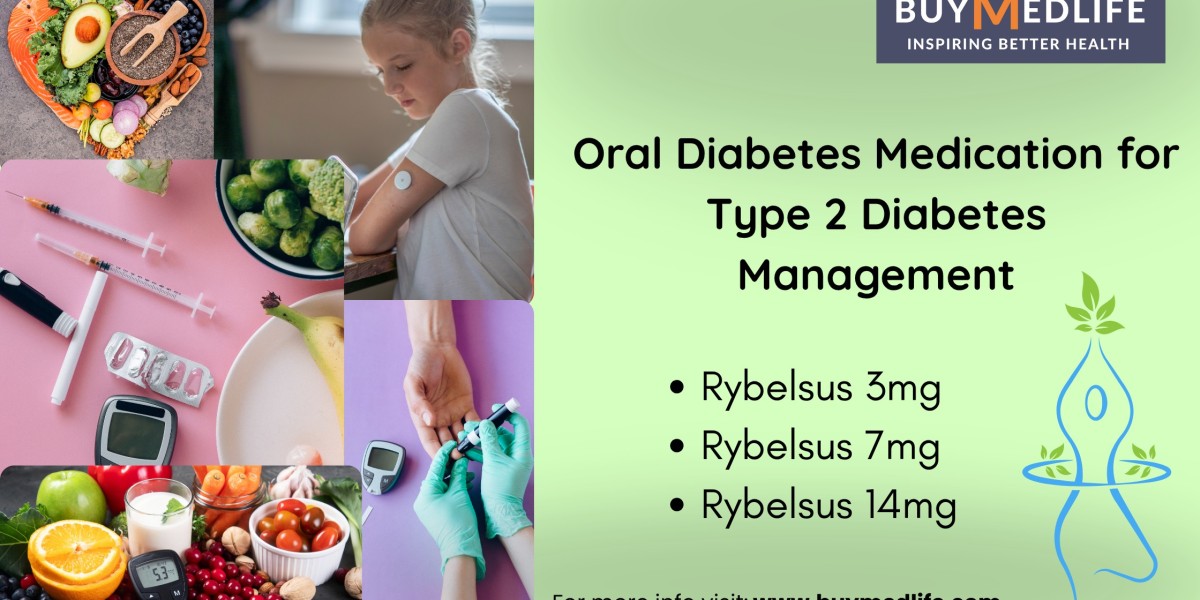Rybelsus (semaglutide) is an oral medication prescribed for adults with type 2 diabetes. Available in 3mg, 7mg, and 14mg tablets, Rybelsus helps lower blood sugar by mimicking the effects of a natural hormone called GLP-1 (glucagon-like peptide-1). As with any medication, Rybelsus can cause side effects, which may vary depending on the dosage. This blog explores the differences in side effects between Rybelsus 3mg and 7mg, while also touching on the 14mg dose, to help you understand what to expect at each stage.
Understanding Rybelsus Dosing
Before diving into side effects, it’s important to understand how Rybelsus is typically prescribed:
Rybelsus 3mg is usually a starting dose, taken for the first 30 days. This helps the body adjust to the medication.
After 30 days, the dose is increased to Rybelsus 7mg for continued blood sugar control.
If needed, doctors may increase the dose further to Rybelsus 14mg, based on how well blood sugar is managed.
This gradual increase helps minimize side effects, especially those affecting the gastrointestinal (GI) system.
Common Side Effects of Rybelsus (All Dosages)
While side effects can vary by dose, some are common across all strengths. These include:
Nausea
Vomiting
Diarrhea
Stomach pain
Constipation
Loss of appetite
These symptoms are often mild to moderate and tend to subside as the body adapts to the medication.
Side Effects of Rybelsus 3mg
As the lowest available dose, Rybelsus 3mg generally causes fewer and less intense side effects. It’s intended to “prime” your digestive system and reduce the risk of severe GI symptoms.
What to Expect:
Mild nausea may occur, especially during the first few days.
Occasional bloating or gas is also possible.
Most people tolerate this starting dose well and do not require medication for side effects.
However, if nausea becomes persistent or worsens, it’s best to consult your healthcare provider before moving to the next dose.
Side Effects of Rybelsus 7mg
When stepping up to Rybelsus 7mg, some patients may notice an increase in GI-related symptoms, especially in the first week after the dose change.
What to Expect:
Increased nausea or queasiness, particularly if taken with heavy meals.
Diarrhea or loose stools may occur more frequently.
Fatigue and mild headaches are also reported, although they are less common.
These effects are usually temporary and can be managed with simple strategies like eating bland foods, drinking more water, and avoiding fatty meals.
Side Effects of Rybelsus 14mg (Bonus Insight)
Though not the primary focus, many patients eventually transition to Rybelsus 14mg for stronger glycemic control.
What to Expect:
Higher doses may cause more pronounced nausea, especially if not gradually titrated.
Some people may experience vomiting, persistent diarrhea, or severe abdominal pain.
Rare side effects like pancreatitis or allergic reactions are more likely at higher doses, though still uncommon.
Doctors typically recommend staying on 7mg for at least 30 days before increasing to 14mg to help prevent these effects.
Who Is More Likely to Experience Side Effects?
Certain factors can increase the likelihood or intensity of side effects:
Low body weight or sensitivity to GI medications
Poor hydration or irregular eating habits
Existing gastrointestinal disorders like IBS
Rapid dose escalation without proper monitoring
How to Manage Rybelsus Side Effects
Most side effects subside as your body adjusts. However, the following tips can ease the transition:
Take Rybelsus on an empty stomach with a sip of water, and wait at least 30 minutes before eating.
Start with small meals and avoid greasy or spicy foods.
Stay hydrated, especially if experiencing diarrhea.
Avoid alcohol, which can worsen nausea and affect blood sugar levels.
Speak with your healthcare provider before increasing the dose if you're still experiencing discomfort.
When to Seek Medical Help
Contact your doctor if you experience:
Severe vomiting or diarrhea leading to dehydration
Signs of pancreatitis (severe stomach pain, back pain, fever)
Allergic reactions, including swelling or rash
Vision changes or signs of hypoglycemia (especially when combined with insulin or sulfonylureas)
Final Thoughts
Rybelsus is a powerful tool in managing type 2 diabetes, but like all medications, it comes with potential side effects. The good news is that most reactions are manageable and temporary, especially if the dose is increased slowly. By understanding what to expect from Rybelsus 3mg, 7mg, and 14mg, you can work with your healthcare provider to stay on track with your treatment while minimizing discomfort.








